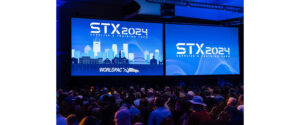Class action suit alleges the OEM knowingly sold vehicles with manufacturing and workmanship defects
Camden, N.J.—In a suit filed last week in U.S. District Court for the District of New Jersey, plaintiffs claim that Subaru of America Inc. knowingly sold vehicles with faulty safety technology.
The case, Laura and James Sampson et al. v. Subaru of America Inc., is a class action suit on behalf of the plantiffs and “all persons in the United States who purchased or leased any 2013-2021 Subaru equipped with an autonomous emergency braking (AEB) system that includes ‘Pre-Collision Braking’ and ‘Reverse Automatic Braking’ (AEB Class Vehicles) and on behalf of all persons in the United States who purchased or leased any 2013-2021 Subaru equipped with Lane Keep Assist (LKA).”
Subaru’s Pre-Collision Braking, along with Lane Keep Assist, is a part of the “EyeSight Driver Assist Technology” suite of safety features. The following are select excerpts from the case, which can be found in its entirety here.
“Subaru failed to inform Plaintiffs and members of the AEB Class before or during the time of sale that the AEB systems in Class Vehicles have manufacturing and workmanship defects including but not limited to poor calibration of the software from multiple control modules, including the ABS Control Module, such that they are prone to activating the brakes when there are no objects in front of the vehicle and/or behind the vehicle when it is backing up.
“The AEB systems also sometimes fail entirely to activate when there are persons or objects in motion in front of the vehicle. This occurs due to miscommunication between all the systems involved in automatic braking, including the sensors, the brakes, and the transmission (the “AEB System Defect”).
“The AEB System Defect prevents the AEB Class Vehicles from behaving as designed and advertised in real-world driving conditions.
“As a result of the AEB System Defect, AEB Class Vehicles will abruptly slow down or stop entirely without driver input when there are no obstacles in front of or behind the vehicle. This presents a clear-cut safety hazard, increasing the chances of a collision.
“Conversely, the AEB System also fails to activate in the situations it was designed to detect and mitigate, such as when a pedestrian or vehicle stops abruptly in front of or behind the AEB Class Vehicle. Thus, the AEB System Defect makes the AEB System unpredictable and makes driving the vehicle unsafe. At the same time, the defect renders the system useless when it is most needed.
“The Lane Keep Assist feature is also defective. Subaru also failed to disclose to Plaintiffs and the members of the LKA Class, before or at the time of sale, that the Lane Keep Assist feature in LKA Class Vehicles has design, manufacturing and/or workmanship defects including but not limited to poor calibration of the software from multiple control modules, including the Power Steering Control Module, such that they attempt to correct the vehicle’s steering when the driver is trying to change lanes, is driving on a road with construction barriers, or if the road has multiple lines due to construction.
“Further, the Lane Keep Assist system will malfunction and shut down entirely while the vehicle is in motion and cannot be used again until the car is restarted (the “LKA Defect” and, together with the AEB System Defect, the “Defects”). The LKA Defect prevents the Class Vehicles from behaving as designed and advertised in real-world driving conditions.
“As a result of the LKA Defect, the Lane Keep Assist system in the LKA Class Vehicles jerks the steering wheel without cause. Moreover, the system prevents the vehicle from change lanes and even steers the vehicle into other vehicles. On other occasions, it simply fails to function completely. Thus, the LKA Defect makes the Lane Keep Assist feature makes driving the vehicle unsafe and the operation of vehicle unpredictable for members of the LKA Class.
“Based on pre-production testing, including design failure mode analysis, quality monitoring team data, quality control audits, early warranty claims, replacement part orders, and consumer complaints to Subaru’s authorized network of dealers, as well complaints to NHTSA, Defendants were aware of the Defects in the Class Vehicles as early as 2012.
“Despite being aware of the Defects and numerous complaints, Subaru knowingly, actively, and affirmatively failed to disclose the Defects. Further, Defendants actively concealed the existence of the Defects, including in advertising and manuals, which describe the EyeSight, “Pre-Collision Braking,” Reverse Automatic Braking Systems and Lane Keep Assist.
“Defendants did this to increase profits by selling additional Class Vehicles at inflated
prices.
“Subaru knew about the Defects present in every Class Vehicle, along with the attendant safety problems, and failed to disclose and actively concealed this information from Plaintiffs and members of the Classes at the time of sale, lease, repair, and thereafter.
“In fact, instead of repairing the AEB Class Vehicles and LKA Class Vehicles, Subaru has insisted that the vehicles are working correctly.
“If Plaintiffs and members of the Classes had known about the Defects at the time of sale or lease, Plaintiffs and members of the Classes would not have purchased or leased the AEB Class Vehicles or the LKA Class Vehicles, or would have paid less for them.
“As a result of their reliance on Defendants’ omissions, owners and/or lessees of the AEB Class Vehicles and LKA Class Vehicles suffered an ascertainable loss of money, property, and/or value of their Class Vehicles.
“Additionally, as a result of the Defects, Plaintiffs and members of the Classes were harmed and suffered actual damages in that their vehicles are defective, they overpaid for defective vehicles, and the vehicles’ driver assist technology systems increase their chances of being involved in a collision by activating without cause and failing to activate when they should.”




Comments are closed.